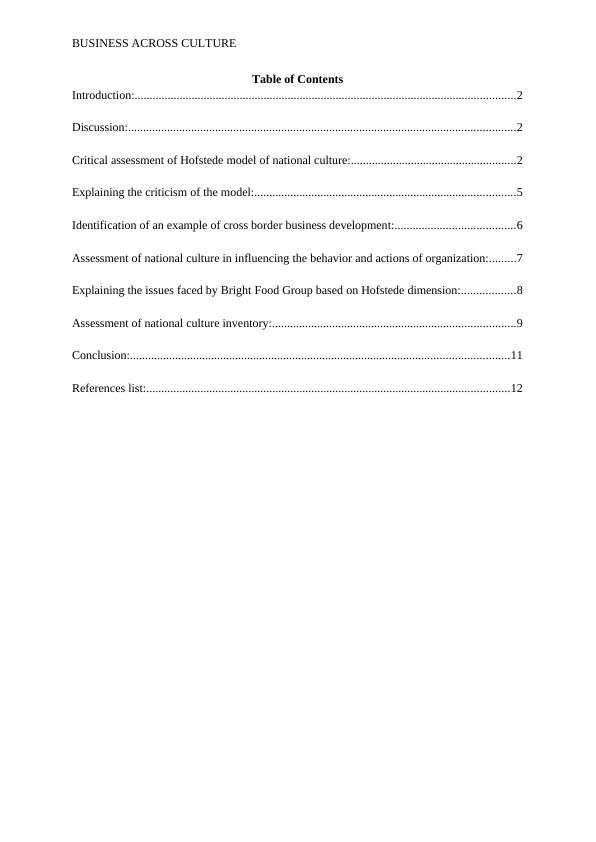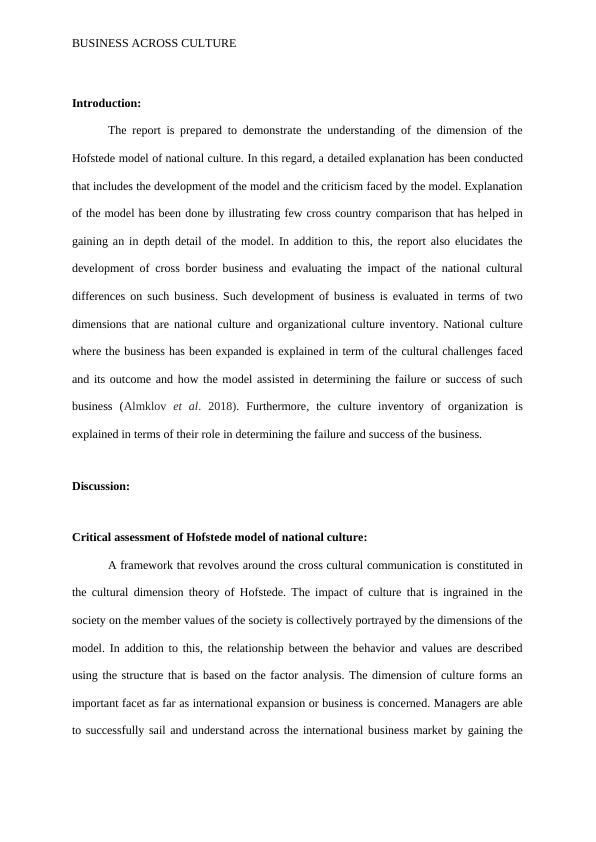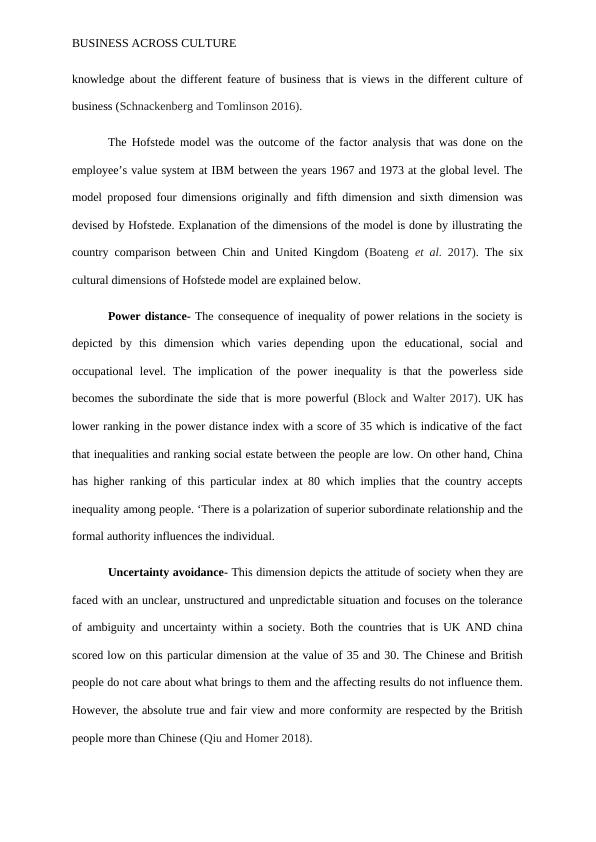Business Across Culture
Critically assess the Hofstede model of national culture and identify a specific example of a cross-border business development impacted by national cultural differences.
16 Pages4392 Words42 Views
Added on 2023-02-01
About This Document
This report discusses the Hofstede model of national culture and its dimensions. It explores the criticism of the model and its implications for cross-border business development. The report also examines the case of Bright Food Group's acquisition of Weetabix and the cultural challenges faced. It highlights the role of national culture in influencing organizational behavior.
Business Across Culture
Critically assess the Hofstede model of national culture and identify a specific example of a cross-border business development impacted by national cultural differences.
Added on 2023-02-01
ShareRelated Documents
End of preview
Want to access all the pages? Upload your documents or become a member.
Critical Analysis of Hofstede’s Model for Cross-Cultural Management
|12
|3964
|470
Business Across Cultures: Assessment of Hofstede Model and Impact on Cross-Border Business Development
|16
|5379
|113
Business Across Cultures: Challenges Faced by Tata Steel in UK
|14
|4337
|267
Business Across Culture Assignment
|15
|4861
|30
Hofstede's Cultural Dimensions Theory- PDF
|20
|5038
|577
Assignment on Global MBA
|20
|5834
|53




